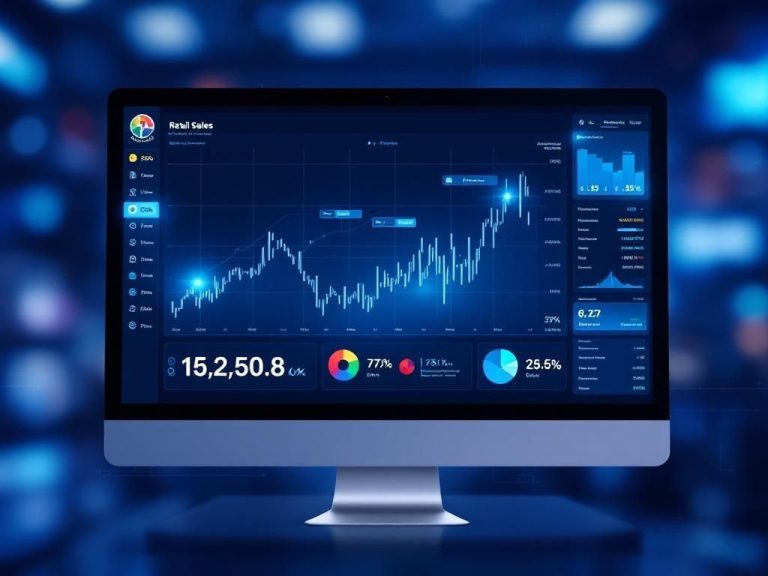In today’s fast-paced retail environment, businesses are constantly seeking ways to enhance their strategies and improve customer experiences. One of the most significant technological advancements that have surfaced in recent years is predictive analytics. This powerful tool enables retailers to forecast future trends, optimize inventory, and personalize customer interactions. As we delve into the world of predictive analytics, we will explore its applications, benefits, and how it can transform your retail strategy.
Understanding Predictive Analytics
Predictive analytics involves the use of statistical algorithms and machine learning techniques to identify the likelihood of future outcomes based on historical data. By analyzing patterns and trends, retailers can make informed decisions that drive business growth. Here are the foundational components of predictive analytics:
- Data Collection: Gathering relevant data from various sources such as sales transactions, customer interactions, and social media.
- Data Processing: Cleaning and organizing data to ensure accuracy and relevance.
- Model Building: Creating predictive models using statistical algorithms and data mining techniques.
- Validation: Testing and refining models to enhance their reliability and accuracy.
- Implementation: Applying the models in real-time scenarios to inform business strategies.
Applications of Predictive Analytics in Retail
Predictive analytics can be applied in various ways within the retail sector to enhance operations and customer engagement. Here are some critical applications:
Inventory Management
Effective inventory management is crucial for retailers to avoid stockouts and overstock situations. Predictive analytics helps in:
- Demand Forecasting: Predicting future demand for products by analyzing past sales data, seasonal trends, and market conditions.
- Optimal Stock Levels: Determining the right amount of inventory to maintain to meet customer demand without excessive surplus.
- Supplier Performance: Analyzing supplier data to improve lead times and ensure timely replenishments.
Customer Insights and Personalization
Understanding customer behavior is essential for creating personalized experiences. Predictive analytics can help retailers:
- Segment Customers: Identifying customer segments based on purchasing behavior and preferences.
- Personalized Recommendations: Providing tailored product recommendations that enhance the shopping experience.
- Churn Prediction: Identifying customers at risk of leaving and implementing targeted retention strategies.
Marketing Optimization
Retailers can leverage predictive analytics to enhance their marketing strategies by:
- Targeted Campaigns: Creating data-driven marketing campaigns aimed at specific customer segments.
- Budget Allocation: Optimizing marketing spend by analyzing the performance of various channels and campaigns.
- Performance Measurement: Evaluating the effectiveness of marketing strategies through predictive modeling.
Benefits of Implementing Predictive Analytics
Integrating predictive analytics into your retail strategy offers numerous benefits:
| Benefit | Description |
|---|---|
| Improved Decision Making | Data-driven insights lead to better, more informed business decisions. |
| Enhanced Customer Experience | Personalization leads to higher customer satisfaction and loyalty. |
| Increased Efficiency | Optimizing inventory and marketing efforts reduces waste and costs. |
| Competitive Advantage | Staying ahead of trends gives retailers an edge over competitors. |
| Greater Revenue | Targeted strategies can lead to increased sales and profitability. |
Challenges in Predictive Analytics
While the benefits of predictive analytics are significant, there are also challenges that retailers must navigate:
Data Quality
The accuracy of predictive models relies heavily on the quality of data. Inconsistent or incomplete data can lead to erroneous predictions.
Technical Expertise
Implementing predictive analytics requires a certain level of technical skill. Retailers may need to invest in training or hire experts.
Integration with Existing Systems
Seamlessly integrating predictive analytics tools with existing retail systems can be complex and may require significant investment.
Steps to Implement Predictive Analytics in Retail
For retailers looking to incorporate predictive analytics into their strategy, here’s a step-by-step guide:
- Define Objectives: Clearly outline what you hope to achieve with predictive analytics.
- Invest in Technology: Choose the right software and tools that fit your needs.
- Data Collection: Gather and organize relevant data from various sources.
- Develop Models: Create predictive models using historical data.
- Test and Validate: Refine models based on performance outcomes.
- Implement Insights: Use the insights gained to inform business strategies.
- Monitor and Adjust: Continually assess the performance of predictive models and make necessary adjustments.
Conclusion
As the retail environment becomes increasingly competitive and complex, leveraging predictive analytics can significantly enhance your operational efficiency and customer engagement. By forecasting trends, optimizing inventory, and personalizing marketing efforts, retailers can not only meet customer expectations but also drive business growth. Embracing this technology is no longer just an option; it’s essential for success in the modern retail landscape.
FAQ
What is predictive analytics in retail?
Predictive analytics in retail refers to the use of statistical algorithms and machine learning techniques to analyze historical data and predict future outcomes, helping retailers make informed decisions.
How can predictive analytics improve customer experience?
Predictive analytics can enhance customer experience by personalizing recommendations, optimizing inventory, and predicting customer behavior, leading to more relevant shopping experiences.
What are the key benefits of using predictive analytics for inventory management?
Using predictive analytics for inventory management helps retailers reduce stockouts, minimize excess inventory, and improve demand forecasting, resulting in increased efficiency and profitability.
Is predictive analytics costly for small retailers?
While there may be initial costs associated with implementing predictive analytics, many affordable solutions exist for small retailers, and the long-term benefits often outweigh the costs.
How can retailers start implementing predictive analytics?
Retailers can start implementing predictive analytics by identifying key metrics to analyze, investing in appropriate software tools, and leveraging historical data to create predictive models.
What industries besides retail benefit from predictive analytics?
Besides retail, industries such as healthcare, finance, manufacturing, and marketing also benefit from predictive analytics to enhance decision-making and operational efficiency.




